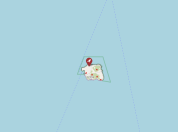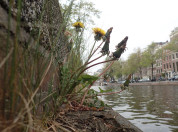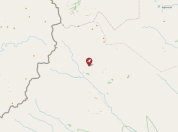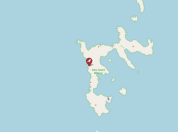Zoeken
Filteren op
Type
Labels
Dossiers
Thema's
Afdelingen
Taal
Active filters
1714 zoekresultaten
Zoekresultaten
-
Symposium Climate friendly agricultural soils - Promise, Perspectives and Reality
Overview NWA-Climate-friendly Agricultural Soils projects ClipsMicro and Kligras. Keynotes by Jennifer Pett-Ridge (Livermore National Laboratory) and Marcel van der Heijden (Agroscope/University of Zürich)
-
Linosa Island
Metadata of the field study (LIN-1) at Linosa Island (LIN), Italy
-
LTER-LIFE student projects: revolutionising ecology
One of the challenges in ecology is to understand and predict how ecosystems are impacted by changes in environmental conditions and external pressures. This challenge is urgent given the unprecedented rate of global change in climate, land use, and urbanisation. To do so, we need to transform the way we do ecological research. -
134.000 bodemdieren in 10 jaar bodemdierensafari's
Nee, de naaktslak is niet de grote winnaar geworden van de Bodemdierendagen van 2024. Bij de 10e editie van dit landelijke citizen science-onderzoek kwamen de 2873 burgerwetenschappers dit veelbesproken bodemdier wel in 81% van de tuinen tegen. En dat is duidelijk meer dan gemiddeld. Maar in plaats daarvan is de regenworm met 94% het vaakst geziene bodemdier van 2024. Het was een jaar met vaak vochtig bodemdierenweer, zonder grote lange droogtes. Dat levert allerlei records op.
-
Dandelion evolves along with hot city
City dandelions grow better in hot summers and flower better after mild winters than their rural counterparts. This is according to research by the Netherlands Institute of Ecology (NIOO-KNAW) that compared dandelions from the centre of Amsterdam with plants outside the city. These experiments - published in the December edition of Evolution Letters - show that dandelions evolved to adapt to urban heat. Such knowledge is essential for sustainable urban planning.
-
Maloti-Drakensberg Mountains
Metadata of the field study (MDM-1) at Maloti-Drakensberg Mountains (MDM), South Africa
-
New Island
Metadata of the field study (NEW-1) at New Island (NEW), Falkland Islands (Malvinas)
-
Paardenbloem evolueert mee met hete stad
Paardenbloemen uit de stad groeien beter in warme zomers en bloeien beter na zachte winters dan hun soortgenoten op het platteland. Dit blijkt uit onderzoek van het Nederlands Instituut voor Ecologie (NIOO-KNAW) dat paardenbloemen uit het centrum van Amsterdam vergeleek met planten buiten de stad. Deze experimenten – gepubliceerd in de decembereditie van Evolution Letters – tonen aan dat paardenbloemen zich evolutionair aanpassen aan stadshitte. Zulke kennis is essentieel voor duurzame stadsplanning.
-
Water op de kaart
Het overkoepelende doel van het project Water op de Kaart is om de ecologische waterkwaliteit in alle wateren te verbeteren, in grote én kleine wateren. Op deze pagina vindt u onder meer de Dataviewer, waarin we zoveel mogelijk beschikbare informatie over de waterkwaliteit in Nederland op één plek verzamelen.Waterkwaliteit raakt ons allemaal, van drinkwater tot natuur en recreatie. Maar hoe goed is het gesteld met het water in jouw omgeving? De Water op de Kaart Dataviewer brengt landelijke gegevens over waterkwaliteit toegankelijk en overzichtelijk samen op een kaart. Met één simpele klik krijg je inzicht in de toestand van het water op elke locatie in Nederland. Een waardevolle bron voor waterprofessionals, overheden, politici en nieuwsgierige burgers.
-
Nieuw hoofd van afdeling Terrestrische Ecologie: Ciska Veen
We are happy to welcome Ciska Veen as the new head of the department of Terrestrial Ecology of the Netherlands Institute of Ecology (NIOO-KNAW). Ciska will start on 1 February 2025.
